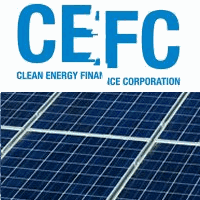The Abbott Government’s insistence that the CEFC cease investing in small scale solar power could mean many pensioners and low-to-middle income households miss out on significant electricity bill savings.
Initiatives by some Councils such as Darebin City Council have enabled pensioners to install solar power systems at zero up front cost, with repayments made via council rates over ten years. Repayment levels are structured so most of those participating will save more each year on their electricity bills than what are repaying.
Darebin City Council’s initiative has been hugely successful and other councils have expressed a desire to emulate it.
But such initiatives require up-front funding for the organisation offering them – and that’s where the Clean Energy Finance Corporation can assist. Far from being a handout, the CEFC invests in initiatives that will generate a solid return. It’s a win-win situation – for Councils, participating ratepayers, solar installers, the CEFC, the government (and Australian taxpayers) – and the environment.
However, CEFC investment in Darebin-type initiatives may not be possible if the Abbott Government directives for the CEFC to stop investing in small scale solar are followed.
“It’s a low-risk investment, the government makes a return on the money and it supports low- to middle-income earners to get solar panels and save money on their bills,” said Jeremy Rich, SunEdison Australia’s managing director Jeremy Rich. SunEdison supplied and installed the systems used in the Darebin Council project.
“Why would you change that? It doesn’t make sense to us.”
The CEFC knows what it’s doing. Since it began, it has made more than $1.4 billion in total commitments to projects totaling over $3.5 billion in value. Its portfolio has achieved matched private sector funds of more than $1.80 for each $1 of CEFC investment. Once fully deployed, its investments are currently expected to earn a portfolio weighted average yield of around 6% across their lifetime.
Investments targeting local councils, manufacturing and agribusiness make up 20% percent of the CEFC’s portfolio.
There is a glimmer of hope – while the Government believes the CEFC should concentrate on “new, innovative and emerging technologies”, that is not what the Act covering it states.
The CEFC operates under the Clean Energy Finance Corporation Act 2012, which says:
“The corporation’s investment function is to invest, directly and indirectly, in clean energy technologies.”
There is no focus on “new, innovative and emerging technologies”. In fact, that is the primary function of another body, the Australian Renewable Energy Association (ARENA).
Related:







































